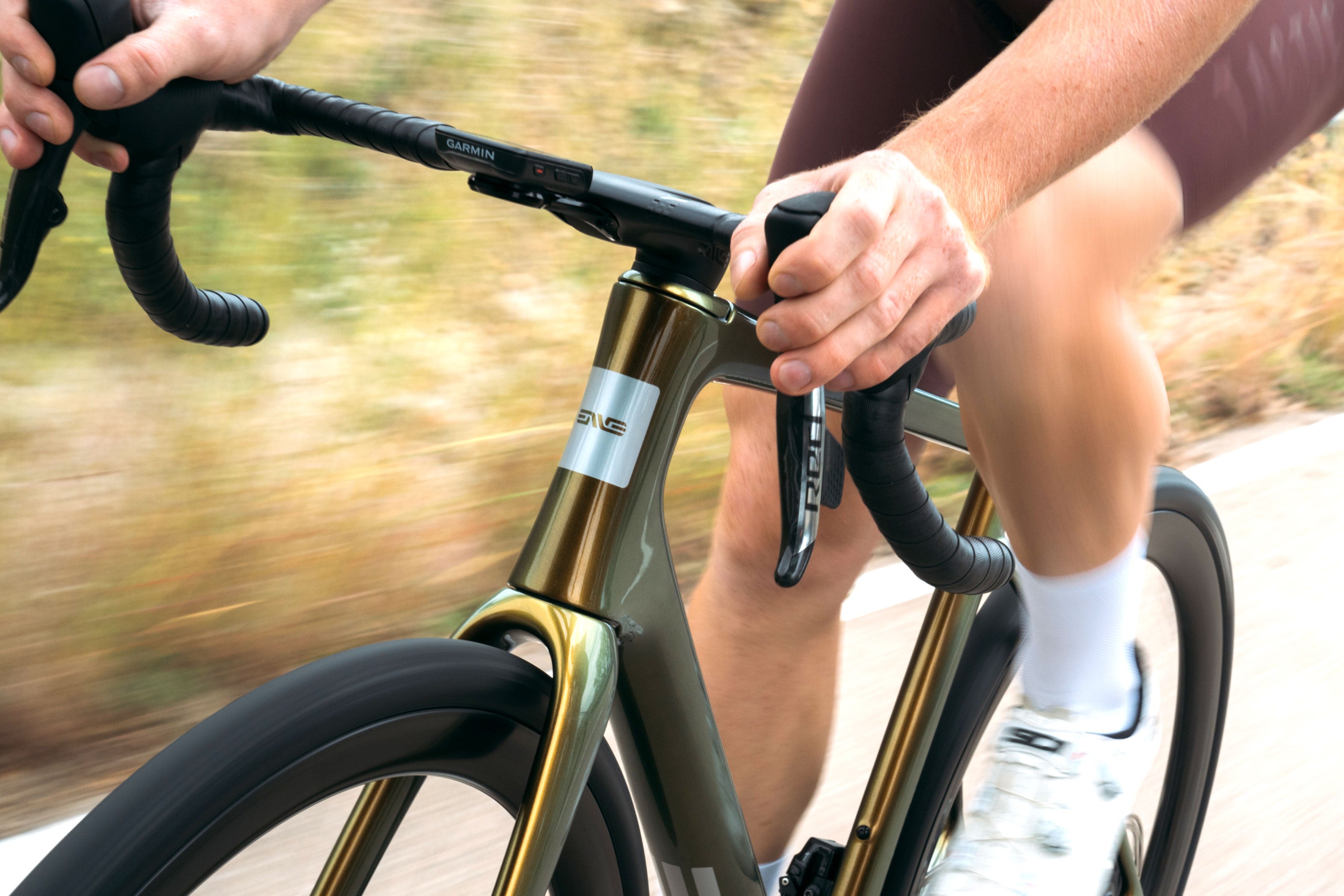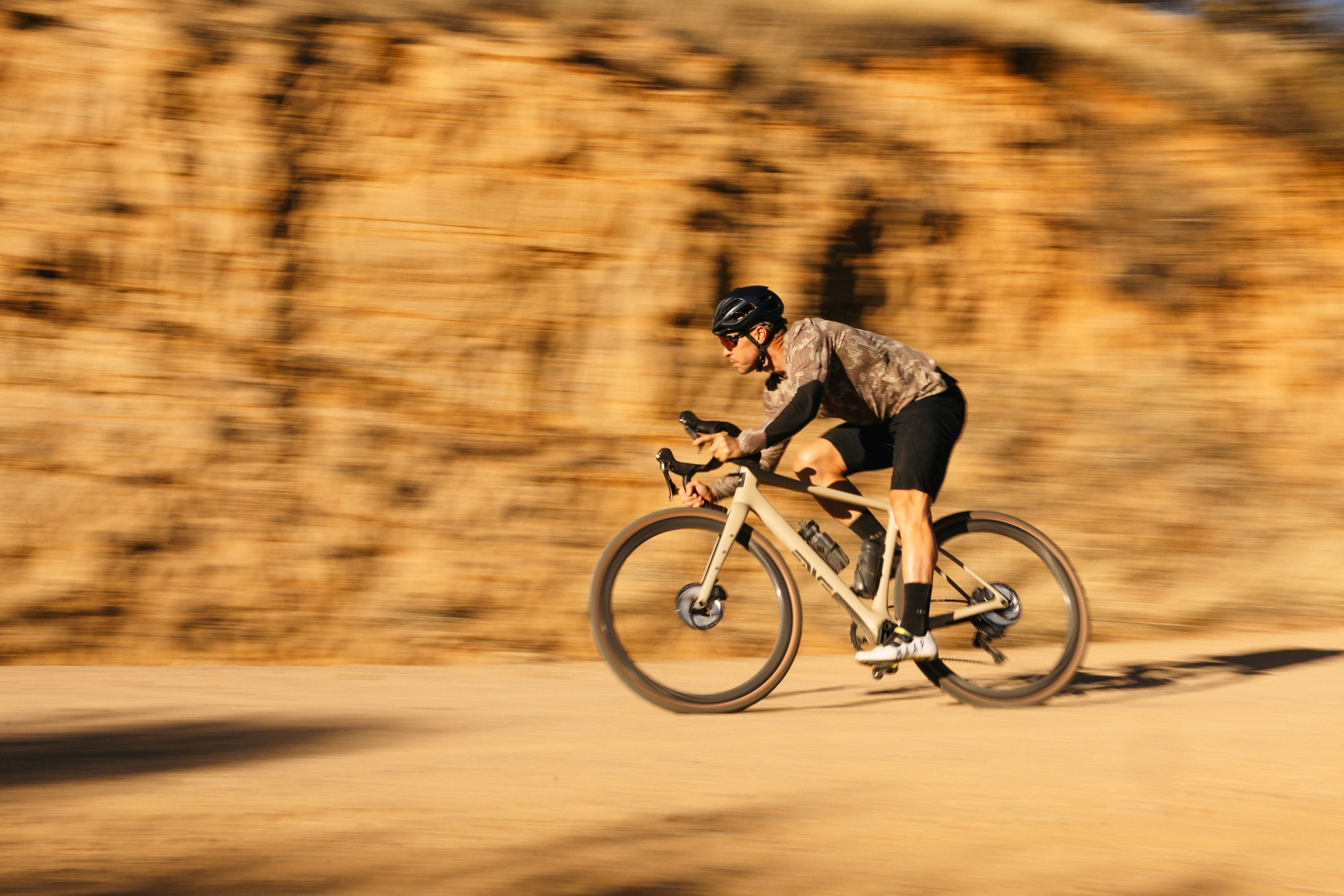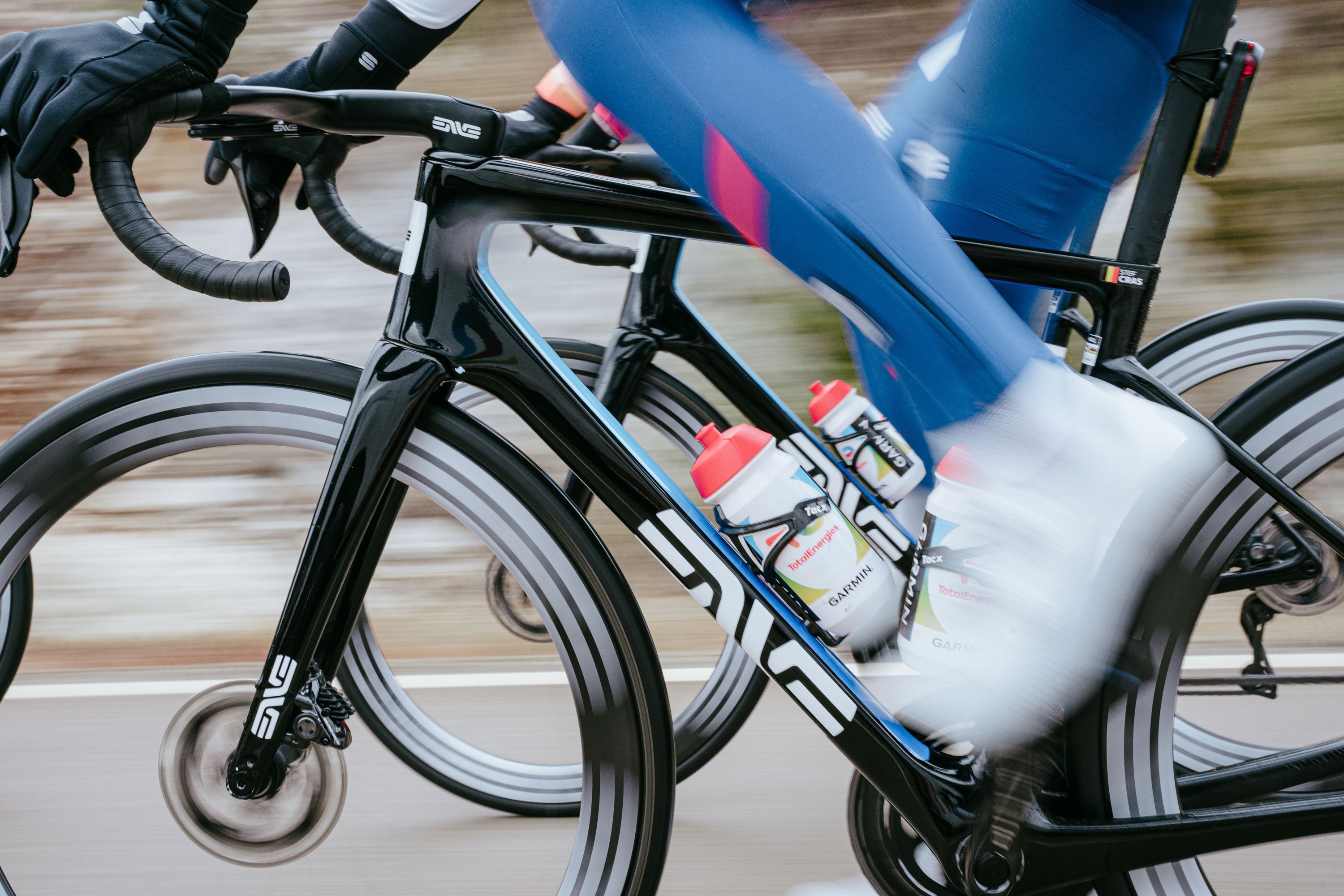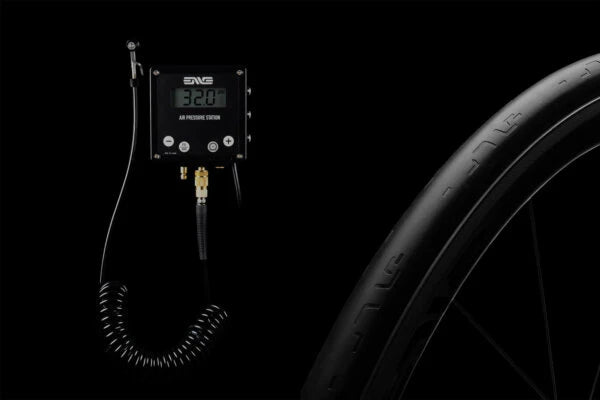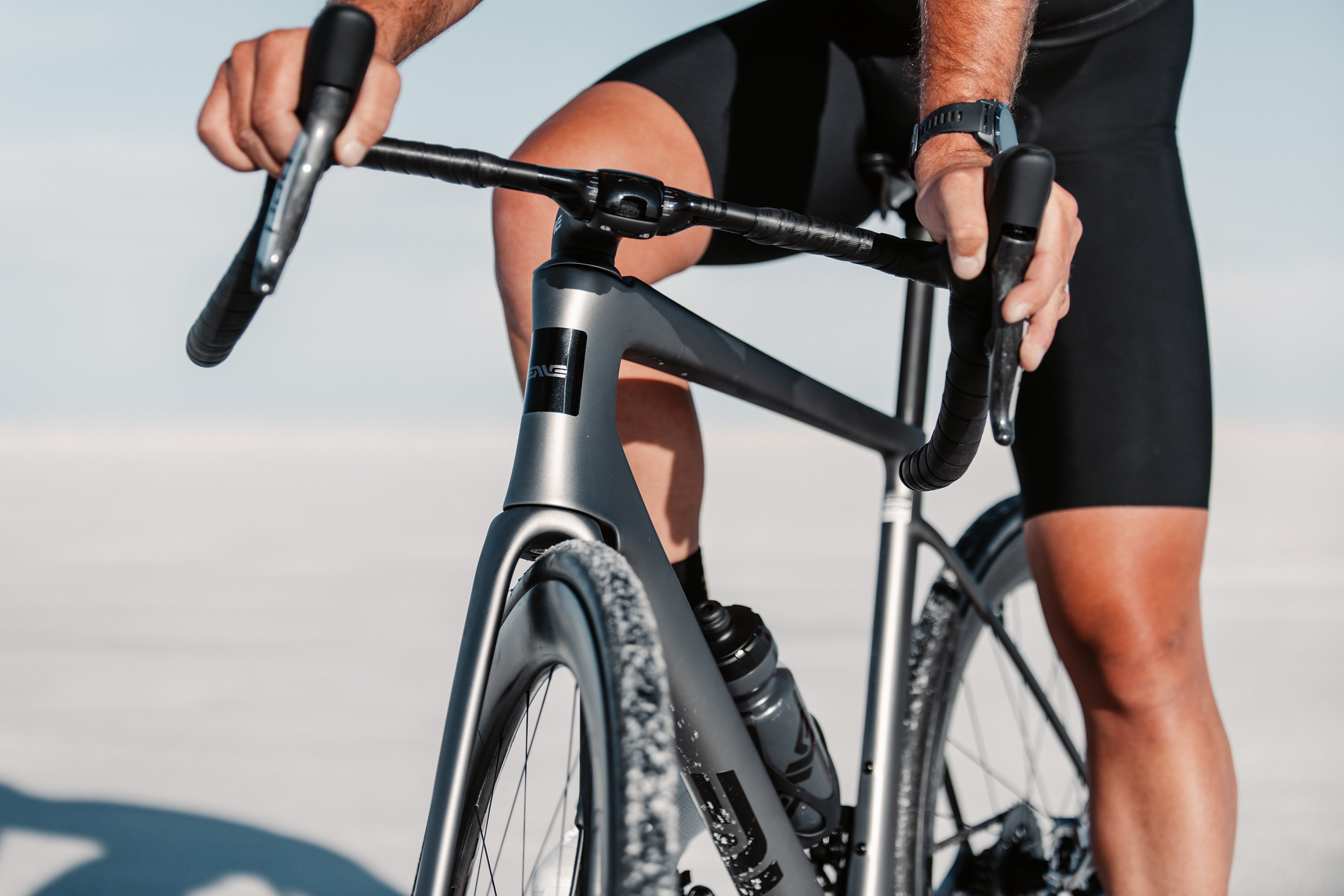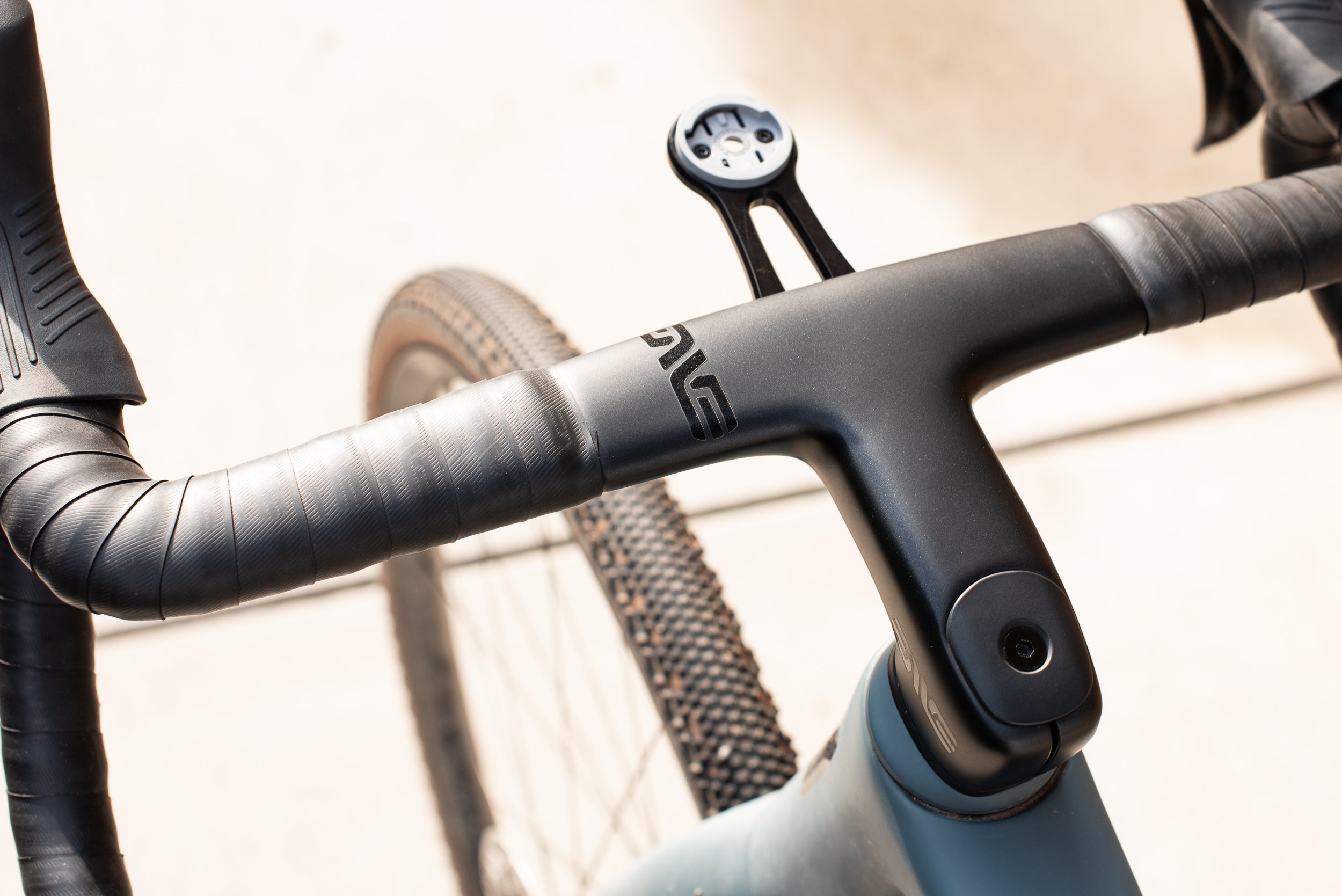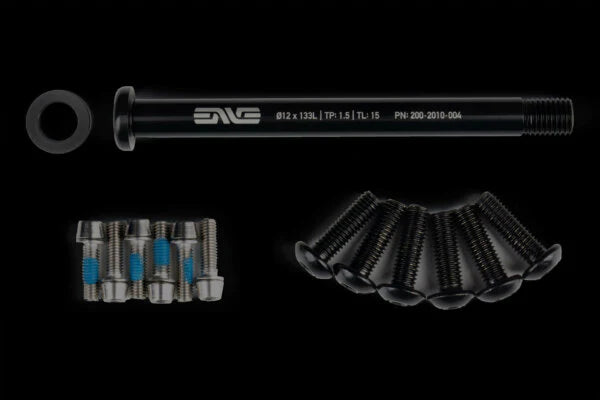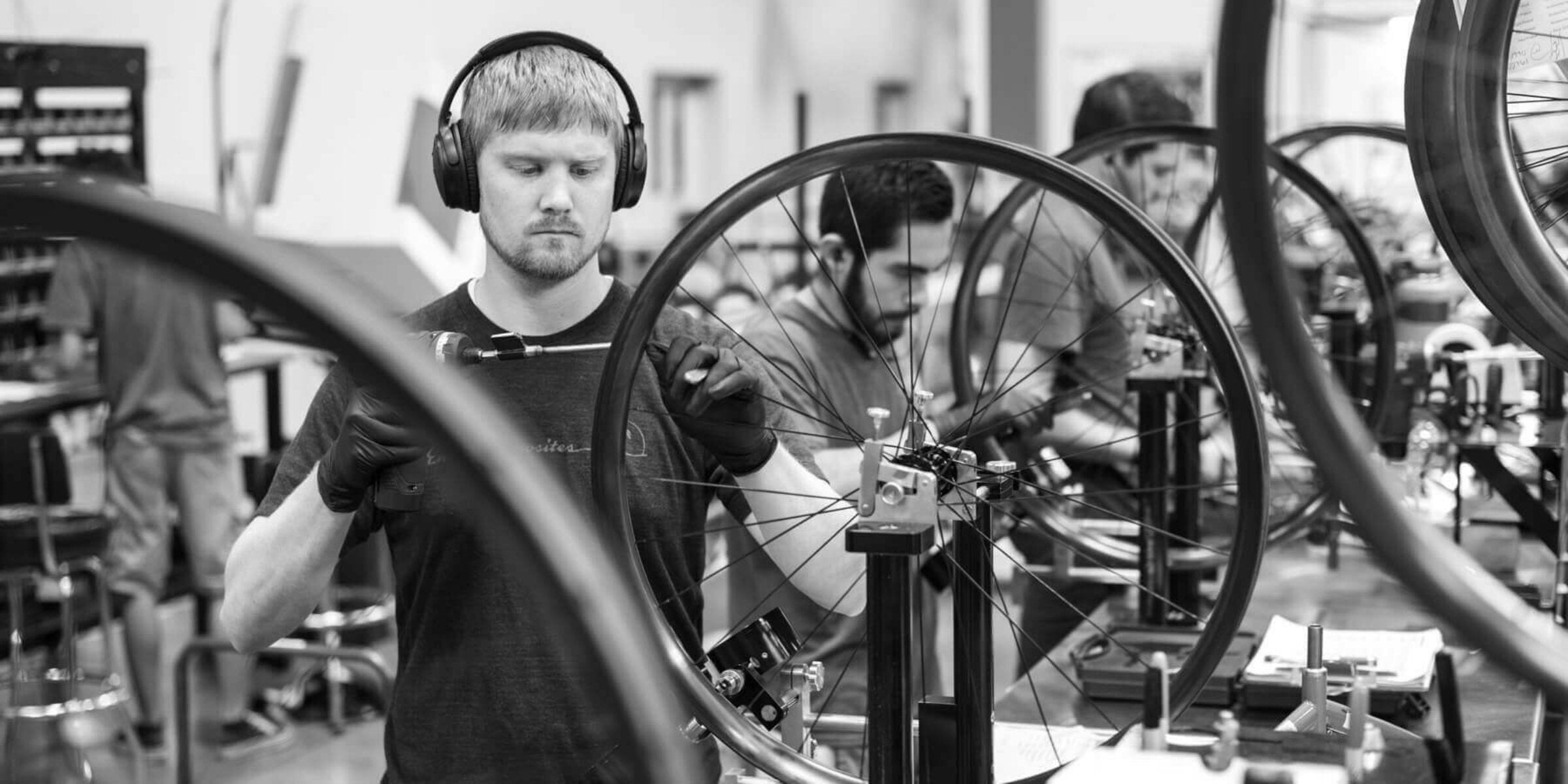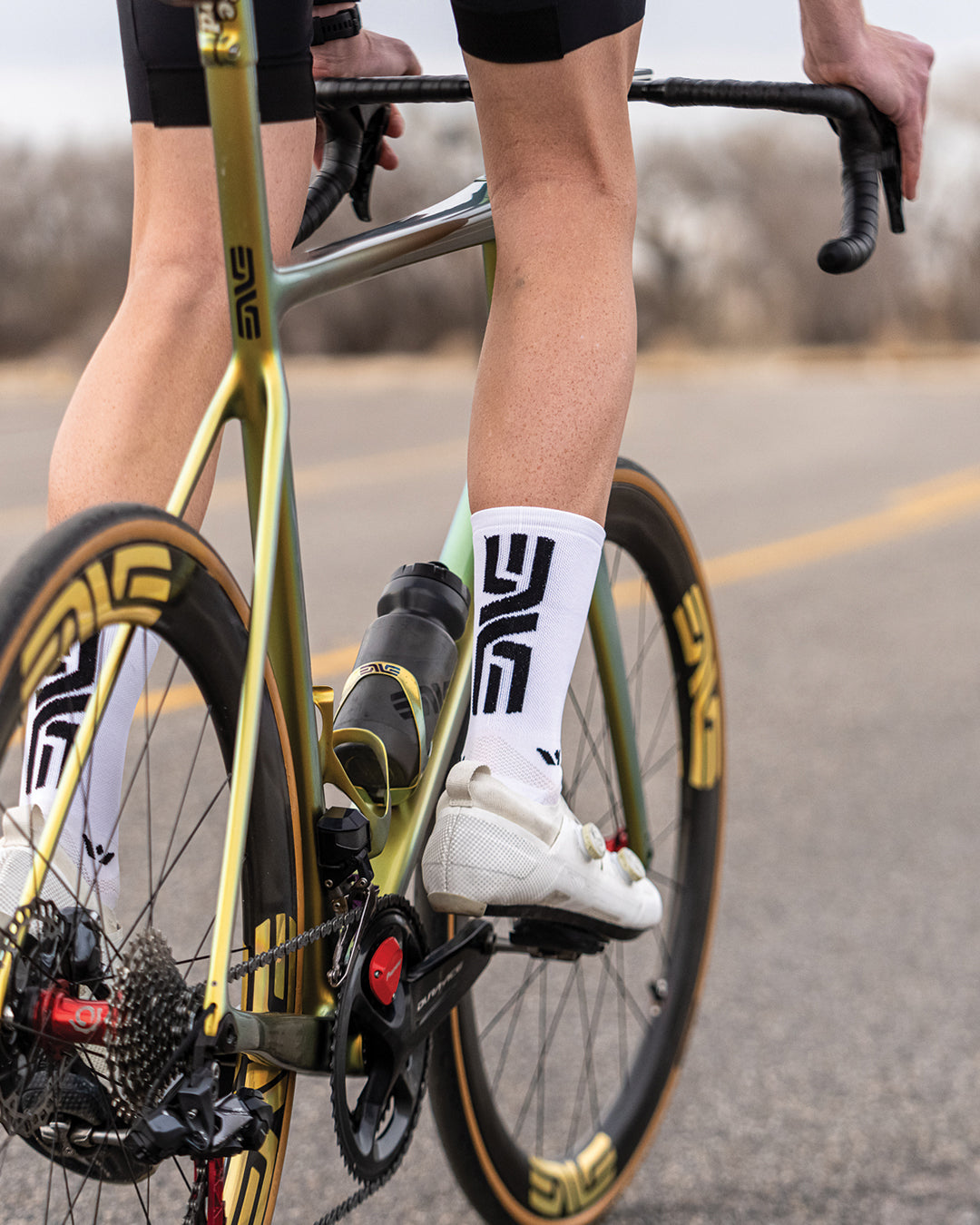The Hookless Bead,
How it Works, and Who They’re For
If you’re reading this article, there’s a high probability you already own a pair of wheels featuring a hookless straight sidewall rim design or you are currently shopping for some and trying to figure out what to buy. If you haven’t bought a new wheelset in some time, you’re likely wondering where all the hook-beads went and/or why some brands use them and others like ENVE offer them on some models in the SES family and not others in the M Series, G Series, SES AR families.
The purpose of this article is to shed factual light on the differences between hooked and hookless bead clincher rims and to hopefully help you make an educated purchase decision and/or understand the product you’re riding on the daily, better.
To start, let’s cover the basics.
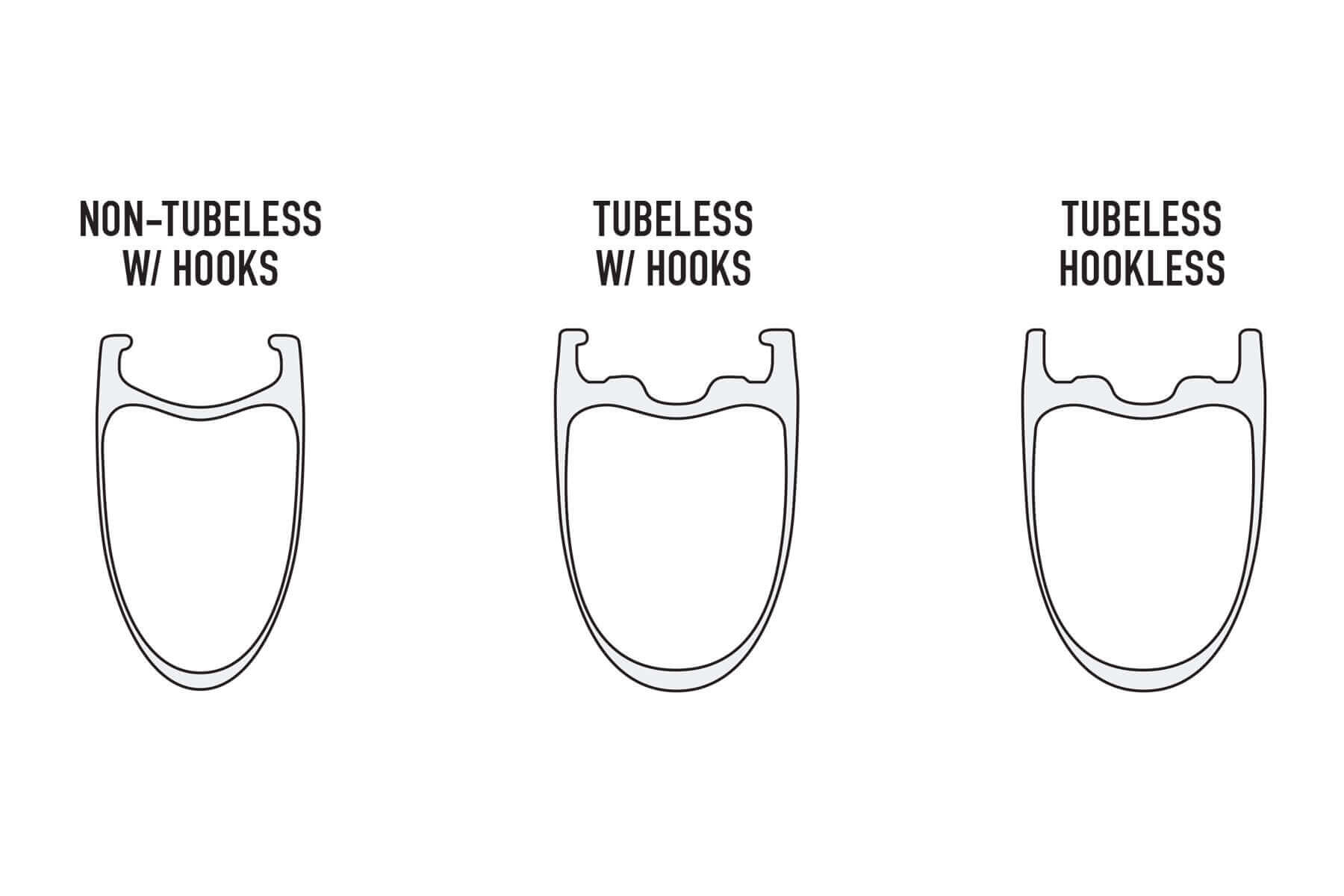
What you see above is the progression of modern rim design, and before anyone breaks their keyboard in an attempt to send us an email to inform us that hookless rims aren’t new, rest assured that we know. Our goal is not to go through the entire history of bicycle rim design, rather, to focus on the modern factors that have led to the resurgence of hookless rim design in a now tubeless world.
All About Hook-Beads
A rim with a hook-bead is referred to as a “crotchet” type rim and features a “hook” that captures the tire’s bead and prevents the tire from coming off of the rim when inflated. The crotchet type rim design (aka rims with hook-beads) emerged into popularity circa the ‘70s as tire technology progressed from rigid non-folding to folding bead tires in an attempt to save key rotational weight. Additionally, these tires were designed for and required the use of an inner-tube. Given that the bead material of the modern folding tire was not rigid and could stretch, the use of a hook-bead in the rim served the purpose of capturing the tire bead and prevented blow off.
The incorporation of hook-beads to modern rim design accelerated innovation in the tire category, allowing focus to be placed on compounds, carcass constructions, and materials that served specific performance objectives ranging from ultimate speed to ultimate puncture resistance.
However, while the bicycle industry was developing rims with hook-beads and tires for them, the wheel and tire world outside of cycling was moving in the opposite direction developing standards for tubeless tires and rims. In fact, the next time you take your car in for a tire service, look at the rims for sale in the shop, and you won’t find any hook-beads. The reason being that outside of bikes most rim and tire standards are developed around a tubeless (no inner-tube required) configuration.
Here are a couple rim profile drawings of two rims, one for a motorcycle, the other a passenger car. The key takeaway is that these are tubeless rim profiles, and there are no hook-beads.

Hookless is the Right Way to Do Tubeless
So, let’s talk about hookless. If you’re a serious mountain biker, you’re running a tubeless setup, and if you run ENVE M Series wheels or another carbon or alloy wheelset, your rims likely feature hookless beads. In 2014, we launched the first M Series and the entire line of wheels featured the hookless design, and while other brands had hookless rims, the launch of the M Series accelerated its adoption. The reasons for going hookless were two-fold:
- Better tubeless performance
- Tougher rim construction
How Tubeless Works
Before we go further, it’s important to understand how a tubeless tire and rim system work.

As you can see, in a tubeless world, hook-beads serve no purpose assuming that the rim and tire are interfacing correctly. In our early days of developing tubeless mountain bike rims, our most common complaint from riders was “burping,” which is defined as air unexpectedly escaping from the tire causing sudden loss of tire pressure.
There are a few reasons why burping happens. Either the tire’s bead isn’t stiff enough and/or the rim or tire’s bead seat diameter isn’t paired properly. This goes for all tubeless applications be it road, gravel, or mountain bike.

To address this issue and eliminate one variable of the problem, we moved to a hookless design on the M Series to ensure that the rim’s bead seat diameter was consistent and more accurate. Going hookless allowed us to use machined hard tooling to create more precise bead seat diameters and bead locks, whereas our hook-bead tooling (mold) was soft so that it could actually be removed from the rim. While this process works well, it introduces more variability into the final product, creates more manufacturing waste, and requires more finishing.
In the short period of five years since the launch of the original M Series, tubeless technology has matured rapidly and the majority of the pain points have been addressed between tire and rim interfaces in terms of air and tire retention. On the road and gravel side however, the industry is still evolving to solve many of the same issues that plagued tubeless on the mountain bike side for years. The number one issue being tire retention.
So, before we move on. Here’s a reminder about how tubeless works.

Like any modern tubeless system, the tire’s bead and the rim’s bead seat diameter must interface to create an airtight seal which allows for air retention and ultimately tire retention. In the case of a rapid air loss puncture, the tire will remain on the rim’s bead seat diameter long enough for the rider to slow to a stop safely.
This next graphic shows how a tire blow-off can happen on a hookless rim that doesn’t have a hook-bead for retention.

Despite the rim’s bead seat diameter being accurate, the tire’s diameter is either too large, or stretches due to the bead material being insufficient to maintain the soft press-fit seal with the rim’s bead seat diameter which is required for air and tire retention. So herein lies the number one problem in road/gravel tubeless innovation today. Rim manufacturers have outpaced the rate at which some tire manufacturers have innovated, creating a complicated environment for consumers when it comes to pairing tires with their new state-of-the-art hookless road or gravel rims.
To help our customers navigate these muddy waters, ENVE has created a list of tires that we have tested and proven to be compatible with modern hookless road wheelsets.
Why Hookless for Road/Gravel?
At this point, you can see why hookless is the rim design of choice if tubeless performance is a priority – which it must be when performance is the primary objective. There is plenty written about the benefits of tubeless, but as a reminder, here are the main ones:
- Increased efficiency through lower rolling resistance (assuming a high performance tire)
- Reduced risk of pinch flats and sealant reduces likelihood of a flat tire as the result of a puncture
Today, there are two things happening in road as it relates to tires and wheels.
- Tubeless
- Higher volume tires – Defined as tires 28mm and larger
These two items enjoy a symbiotic relationship. The movement toward higher volume tires, makes tubeless a more user friendly proposition and tubeless allows for higher volume setups to be lighter and perform better over mixed terrain. And these innovations, point to hookless rims as the ideal platform to innovate high volume road applications upon.
In addition to improved tubeless performance by employing a hookless design, there are a few other benefits that can be associated with the hookless evolution, the first being aerodynamics.
Aerodynamics
In 2016 we launched the SES 4.5 AR which consequently was our first road wheelset featuring the tubeless specific hookless-bead design. The design priority for this wheelset was to achieve overall performance with a 28mm-30mm tire that was on par with leading wheel tire combos where the rim was optimized around 25mm tires. In short, the hookless design won out in testing as its straight sidewalls further refine the airflow transition zone between the tire and rim, creating a more stable and efficient interface.

These marginal gains and a ride quality defined by best in class speed, stability, and confidence inspiring handling are the reasons why our SES 3.4 AR and SES 4.5 AR wheelsets remain uncontested as the kings of all-road riding.
Durability and Toughness
We learned years ago in the development of our original M Series that a hookless straight sidewall rim design results in a tougher more resilient carbon rim structure. The elimination of the hook-bead allows the carbon to bend in a more natural manner improving the structure, while at the same time allowing for an increase in material at the leading edge, improving impact toughness and resistance.
Manufacturing Efficiency
While unrelated to the rim’s performance, manufacturing efficiency and sustainability is greatly improved with hookless type rims.
Rims designed with hook-beads require the use of a removable mold that creates the shape of the tire bed and the hook-beads. When the rim is cured and removed from the mold, the hook-beads essentially lock the mold that created them into the rim. To solve this, we employ a process that utilizes a singular use, pliable bladder material that can be removed. Once the bladder material is removed, it is discarded for recycling. While it is great that we can recycle the material, the manufacturing of the material used for these bladders is expensive and requires longer lay-up times, and once the rim is molded, longer finishing times. All things that add to the cost of a carbon rim. On top of that, rims with hook-beads are more likely to be scrapped for defects than rims of a hookless design, further adding to the cost.
By contrast, to manufacture a hookless rim, we can use machined tooling that is reusable for thousands of cycles before it needs to be replaced. This metal tooling is recyclable and offers a much more sustainable solution to molding carbon rims. Additionally and as discussed previously, because the tooling is machined, critical tolerances like bead seat diameters are consistent and precise reducing scrap and consumer issues down the road. In addition to these benefits, hookless type rims require less finishing and have lower scrap rates. When you combine these manufacturing efficiencies with the enhanced durability of a hookless rim, the result is far fewer carbon rims landing in the landfill. Ultimately, hookless type rim manufacturing is simply more sustainable in every way.
Who’s Hookless For?
In summary, hookless is for riders who want to enjoy the performance benefits of modern road, gravel, and mountain bike wheel and tire technologies. While there is much progress to be made still in terms of tire and rim manufacturers cooperating to ensure tires are safe for use with hookless type rims, many tire manufacturers are making excellent tires that have proven to be reliable and safe when paired with our hookless designs featured on our SES, G Series and M Series wheel models.
For help choosing a tire for your hookless wheels, please refer to our tire compatibility charts and be sure to reference our tire pressure recommendations. Finally, no matter what wheel and tire you are running, never exceed the maximum pressure rating of the rim or tire and in the case of a discrepancy between max tire pressure ratings on rim and tire, always default to the lower of the two maximum pressures.
For more assistance or if you have additional questions, don’t hesitate to contact ENVE Customer Service at support@enve.com or 1-877-358-2869


